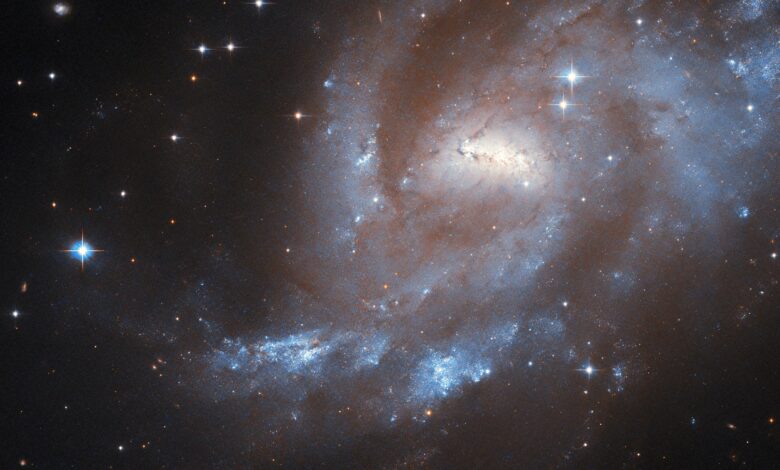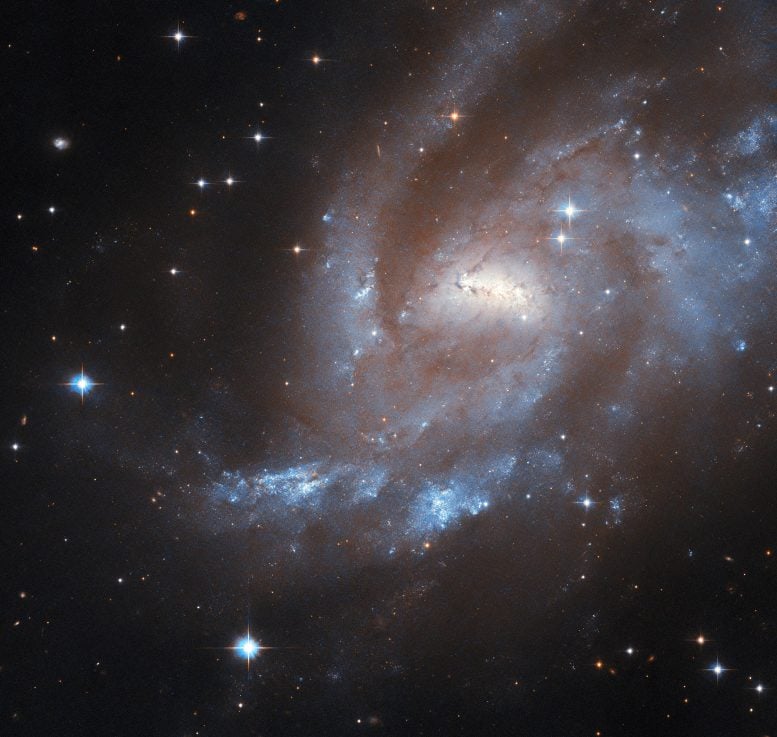A Galaxy’s Tale of Birth, Beauty, and Explosions


UGC 11861, a barred spiral galaxy nestled in the constellation Cepheus, lies 69 million light-years from Earth. This galaxy is not only a breathtaking sight captured by the Hubble Space Telescope but also a hotbed of cosmic activity.
Resting near the center of the northerly constellation Cepheus, high in the northern sky, is the barred spiral galaxy UGC 11861, the subject of the latest Hubble Space Telescope image.
UGC 11861 is located 69 million light-years away from Earth — which may seem a vast distance, but it’s just right for Hubble to grab this majestic shot of the galaxy’s spiral arms and the short but brightly glowing bar in its center. Among the cloudy gases and the dark wisps of dust, this galaxy is actively forming new stars, visible in the glowing blue patches in its outer arms.
This activity has resulted in three supernova explosions being spotted in and near UGC 11861, in 1995, 1997, and 2011. The earlier two were both Type II supernovae, a kind that results from the collapse of a massive star at the end of its life. This Hubble image was made from data collected to study Type II supernovae and their environments.
Source link



